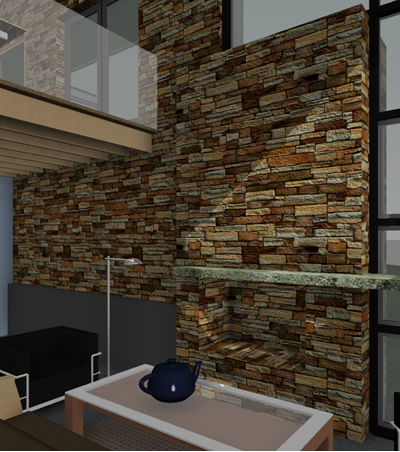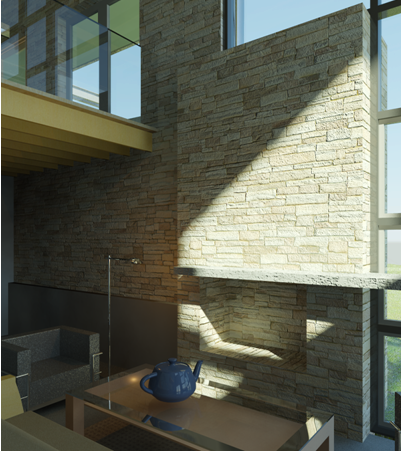You can create a real-time rendering to display a model using the Realistic visual style, or you can render the model to create a photorealistic image. The following images illustrate these rendering types.
| Realistic (uses the Realistic visual style) | Photorealistic (a rendered image) |
|---|---|
 |
 |
The Realistic visual style instantly displays realistic material appearances in the model view. With the shadow and depth settings applied, you can rotate the model to display its surfaces as they would appear in different lighting situations. See Realistic Visual Style.
The process to create a real-time rendering view is as follows:
- Create a model element, or open an existing model.
- Specify realistic material appearances for the element. See Materials.
- Specify graphic display options.
- Open view that you can edit. Note: Real-time rendered views are not available in drafting views, schedules, or legends.
- Specify the Realistic visual style on the View Control Bar.
In order to display materials using the Realistic visual style, the Use Hardware Acceleration (Direct3D®) option is turned on by default. When you start Vasari, if your computer's video card and driver have not been tested with Vasari, or if they do not meet minimum requirements, a warning displays that describes the issue. The warning has a hyperlink to an Autodesk website that lists the tested video cards and drivers.
Because materials can only render with hardware acceleration, if Hardware Acceleration is turned off, the Realistic visual style will look the same as the Shaded visual style. Click 
 Options
Options Graphics tab
Graphics tab Use Hardware Acceleration (Direct3D®) to access the hardware acceleration setting.
Use Hardware Acceleration (Direct3D®) to access the hardware acceleration setting.
Related topic